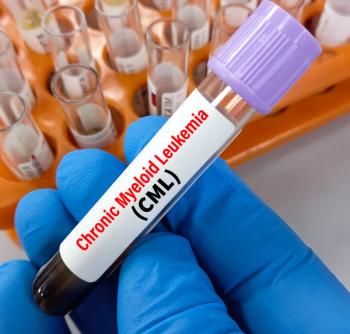
- February 2016 Autoimmune Disorders
- Volume 82
- Issue 2
Empowering Patients to Navigate OTC Allergic Rhinitis Therapy: Practical Points for the Pharmacist
This article was sponsored by McNeil Consumer Healthcare, the makers of RHINOCORT® Allergy Spray
Allergic rhinitis (AR) affects 10% to 30% of adults in the United States. Predominant symptoms of AR include nasal symptoms, such as congestion, rhinorrhea, itching, and sneezing, as well as itching, redness, and tearing of the eyes.1,2
Although it is often misrepresented as a mere nuisance condition, AR can cause substantial impairment. AR symptoms can reduce overall quality of life.1,2 Individuals with AR are likely to go to the pharmacy to seek relief. Pharmacists can help them by explaining how treatments for AR work, the important differences between treatments, and appropriate treatment strategies for varying levels of AR severity. However, it is also important to emphasize the importance of allergen avoidance. If avoidance is impractical, patients may seek treatment, starting with their most severe symptoms.1
Key Differences Between Treatments
To enable optimal treatment choice, it is important for pharmacists to explain some of the fundamental differences between available OTC treatments (Table1-5), and to differentiate adjunctive treatments from main-line therapies. Adjunctive treatments include nasal saline, which may temporarily clear extra mucous from the nasal passages.1 Decongestants reduce congestion severity by constricting inflamed nasal vasculature and can be used with an antihistamine.4
Beyond the adjunctive therapies are the main-line maintenance therapies of antihistamines and intranasal steroids (INSs). Antihistamines block the effects of the inflammatory mediator histamine, which is the most prominent mediator in the allergic cascade,4,6 whereas INSs block multiple points of the inflammatory cascade. Specifically, INSs simultaneously inhibit the effects of histamine, cytokines, chemokines, and inflammatory cells, including eosinophils, basophils, and mast cells.6,7
Both INSs and second-generation antihistamines are suitable for long-term management of AR symptoms. INSs are rated as the most effective class of medicine for management of AR with nasal congestion, according to treatment guidelines. Second-generation antihistamines have also been shown to be an effective first-line option for AR. Although INSs may exhibit therapeutic effects within 24 hours, maximum relief may only occur after 1-2 weeks of treatment.1,2
Over the past 2 years, several OTC INSs have been approved, with RHINOCORT® Allergy Spray (budesonide) being the most recent of these approvals. Other products in this class include Flonase®
Allergy Relief (fluticasone propionate) and Nasacort®
Allergy 24HR (triamcinolone acetonide).8-10 INSs, both prescription and OTC, are similar in efficacy but have different sensory and product characteristics.1,2
INS Sensory and Other Product Characteristics
Not all patients may perceive sensory and other product characteristics, but these characteristics may play a role in selection of an INS. Differences among the 3 FDA-approved OTC INS formulations include spray volume per actuation, scent, and presence of phenylethyl alcohol. RHINOCORT® Allergy Spray has the lowest volume of spray per actuation among 24-hour OTC INS nasal allergy sprays.11 Two OTC INSs are scent-free and alcohol-free (RHINOCORT® Allergy Spray and Nasacort
®
Allergy 24HR).12-15 Flonase® Allergy Relief has a scent and contains alcohol.16,17
Role of the Pharmacist
In addition to helping patients select and use OTC treatment options for AR effectively, pharmacists can ensure the best patient experience by helping to manage expectations of treatment. Products can be differentiated by how they are used. Clarify that INSs and antihistamines are indicated for long-term symptom control, while decongestants are generally short-term treatment. In addition, patients requiring INS therapy should be advised not to expect immediate symptom relief. Remind patients not to stop treatment early, as maximum symptom relief may not occur until 1-2 weeks of treatment have elapsed.
It is important to ask patients if there are current elements of treatment that affect their willingness to continue using the treatment. Practitioners can help differentiate between available treatments based upon sensory and other product characteristics.
Finally, explain how treatments work, noting the important differences between them. Recommend appropriate treatment strategies and manage patient expectations regarding therapy. It is important to discuss which symptoms are most bothersome to patients and to treat patients with agents that relieve these symptoms most effectively. By discussing the best treatment for each patient, pharmacists can help patients achieve optimal AR symptom control in an individualized manner.
References
- Wallace DV, Dykewicz MS, Bernstein DI, et al; Joint Task Force on Practice; American Academy of Allergy, Asthma, and Immunology; American College of Allergy, Asthma, and Immunology; Joint Council of Allergy, Asthma and Immunology. The diagnosis and management of rhinitis: an updated practice parameter. J Allergy Clin Immunol. 2008;122(suppl 2):S1-S84.
- Seidman MD, Gurgel RK, Lin SY, et al; Guideline Otolaryngology Development Group. AAO-HNSF. Clinical practice guideline: allergic rhinitis. Otolaryngol Head Neck Surg. 2015;152(suppl 1):S1-S43.
- Harvey R, Hannan SA, Badia L, Scadding G. Nasal saline irrigations for the symptoms of chronic rhinosinusitis. Cochrane Database Syst Rev. 2007(3):1-40.
- Tran NP, Vickery J, Blaiss MS. Management of rhinitis: allergic and non-allergic. Allergy Asthma Immunol Res. 2011;3(3):148-156.
- Ramey JT, Bailen E, Lockey RF. Rhinitis medicamentosa. J Investig Allergol Clin Immunol. 2006;16(3):148-155.
- Bielory BP, O’Brien TP, Bielory L. Management of seasonal allergic conjunctivitis: guide to therapy. Acta Ophthalmol. 2012;90(5):399-407.
- Canonica GW, Compalati E. Minimal persistent inflammation in allergic rhinitis: implications for current treatment strategies. Clin Exp Immunol. 2009;158(3):260-271.
- FDA. RHINOCORT® Allergy Spray OTC Approval Letter. www.accessdata.fda.gov/drugsatfda_docs/appletter/2015/020746Orig1s032ltr.pdf. Accessed October 29, 2015.
- FDA. Flonase® Allergy Relief OTC Approval Letter. www.accessdata.fda.gov/drugsatfda_docs/appletter/2014/205434Orig1s000ltr.pdf. Accessed October 29, 2015.
- FDA. Nasacort® Allergy 24HR OTC Approval Letter. www.accessdata.fda.gov/drugsatfda_docs/appletter/2013/020468Orig1s035ltr.pdf. Accessed October 29, 2015.
- Meltzer EO. Formulation considerations of intranasal corticosteroids for the treatment of allergic rhinitis. Ann Allergy Asthma Immunol. 2007;98(1):12-21.
- RHINOCORT® Allergy Spray [prescribing information]. Wilmington, DE: AstraZeneca; 2010.
- RHINOCORT® Allergy Spray Drug Facts Label.
- Nasacort® Allergy 24HR [prescribing information]. Bridgewater, NJ: Sanofi-Aventis US LLC; 2013.
- Nasacort® Allergy 24HR Drug Facts Label.
- Flonase® Allergy Relief [prescribing information]. Research Triangle Park, NC: GlaxoSmithKline; 2015.
- Flonase® Allergy Relief Drug Facts Label.
RHINOCORT® is a licensed trademark of AstraZeneca AB. All third-party trademarks are property of their respective owners.
Articles in this issue
over 9 years ago
Pet Peeves (February 2016)over 9 years ago
Case Studies (February 2016)over 9 years ago
Can You Read These Rxs? (February 2016)over 9 years ago
Accountable Care Organizations and Provider Statusover 9 years ago
Generic Product News (February 2016)over 9 years ago
Providing Health Care to the UnderservedNewsletter
Stay informed on drug updates, treatment guidelines, and pharmacy practice trends—subscribe to Pharmacy Times for weekly clinical insights.























































































































































































































